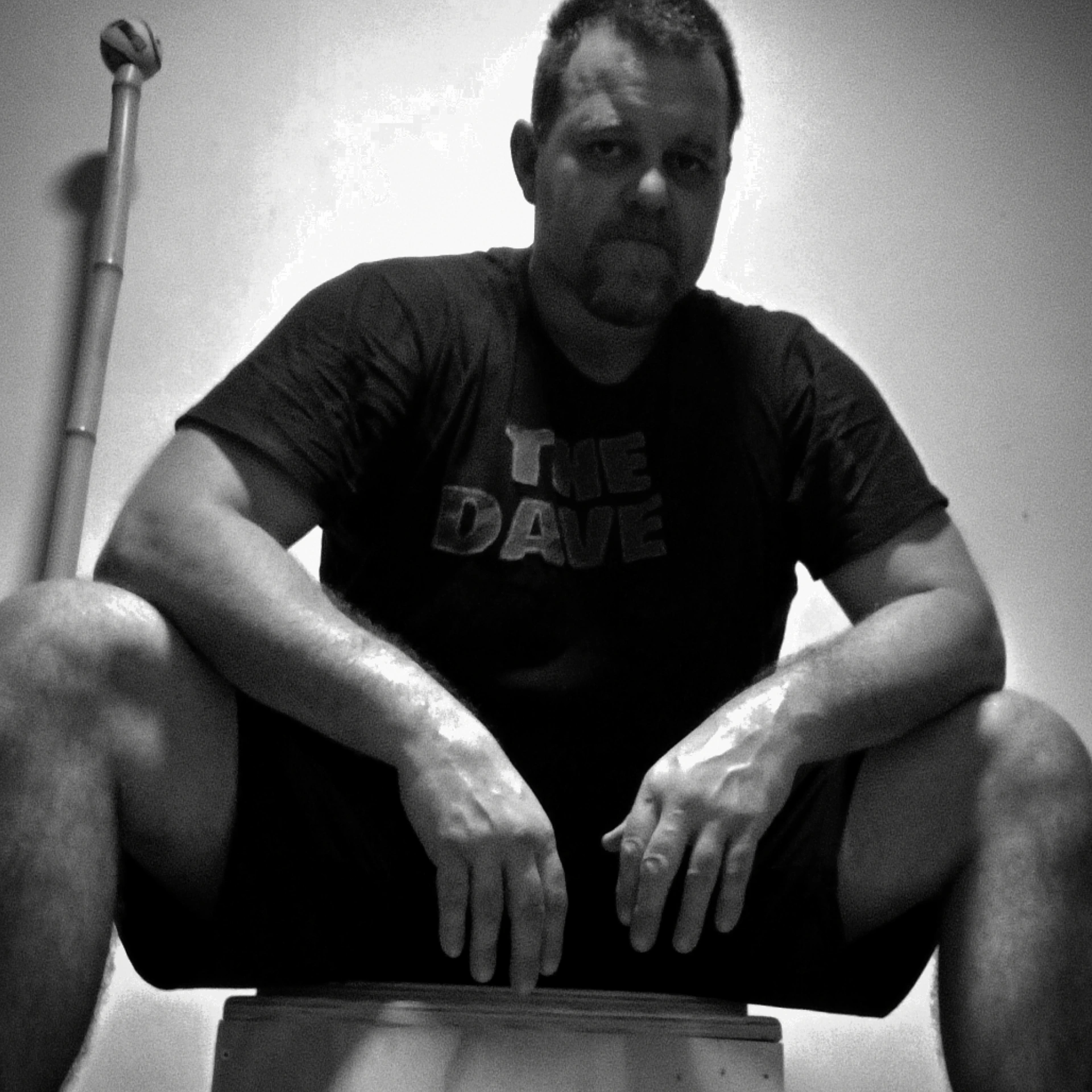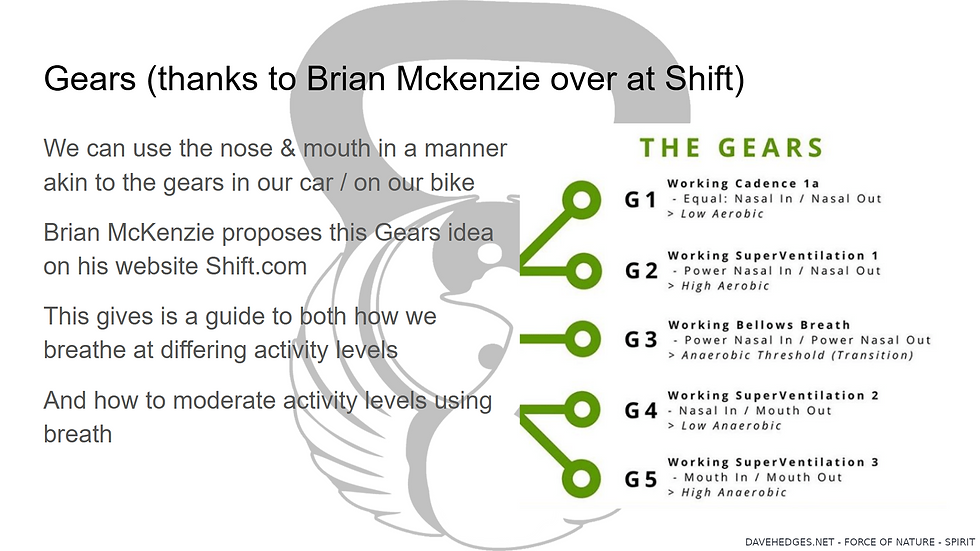Paul asks: Does How You Breathe Matter?
- Dave Hedges

- Feb 10
- 5 min read
"Hi Dave, Thoroughly enjoy your newsletters.
I have a topic for you.
Breathing.
It’s a minefield.
Mouth open, mouth closed.
Diaphragmatic, what to do in sports.
You think your on the right road then your watching a match on tv and a professional sportsman is breathing mouth open!!!!
Yeah definitely a minefield.
Regards Paul"
This is a fantastic question from Paul, so lets jump in...
Yes, breathing has gone from a simple reflexive function to a near religion in some circles.
To start, I want to share a Bruce Lee quote:
"Before I learned the art, a punch was just a punch, and a kick, just a kick.
After I learned the art, a punch was no longer a punch, a kick, no longer a kick.
Now that I understand the art, a punch is just a punch and a kick is just a kick."
Replace "punch" and "Kick" with breathing and we're good to go.
What Bruce is referring to is the initial ignorance stage where a thing is just a thing. Kind of like when you were a kid watching an adult drive a car and though it was just driving, easy eh?
Then you get into a car behind the wheel for the first time. And whoa!! So much to think about, steering, mirror, signal manoeuvre, clutch, accelerator, brake, speed, too fast, too slow.......arrrgh!!
Fast forward a few years and now you're so used to driving that you may be tempted (I hope you resist) to check your phone or do your make up while driving.
The subject of breathing is very much in the middle stage for many, no longer ignorant, but there is confusion around the application of the knowledge being put out, mostly by instructors that are only one weekend workshop ahead of you!
So to quickly answer the mouth open/mouth closed question I'm going to borrow from a guy called Brian McKenzie and his company Shift/Adapt.
He uses a concept based on the gears of your car.
It goes like this:

1st Gear - Nasal in & Out, equal breathing i.e. in breath & outbreath are about the same length = Low Aerobic, light exercise i.e. walking and daily living activities
2nd Gear - Forced Nasal in & More relaxed out Out. You're labouring the inhale a bit but still comfortable with nasal only breathing = High Aerobic i.e. cycling, rower, jogging
3rd Gear - Nasal in and Out, forced. We're labouring now, the breathing is getting heavy but still manageable through the nose. = Anaerobic Threshold, top end of aerobic moving into anaerobic. This takes time and practice to achieve, but once available it's where a lot of conditioning work can happen
4th Gear - Nose in, mouth out. Low anaerobic, so high effort moderate duration.
5th Gear - All mouth, high anaerobic, you're booking it and blowing out your arse, the effort is unsustainable
These gears are McKenzie's system and I really like it.
However, this is for training, not for the game itself.
There are those who will tell you it is possible to work at any intensity with pure nasal breathing, and they may be right, you can I'm sure adapt and develop that ability.
But to what end?
How useful does it become?
We have the ability to open the mouth and move more air, so why not use it when needed.
Some of the guys I've worked closely with on breathing and applying it in endurance events have likened opening the mouth feeling like the turbo just kicked in (yet another car/driving analogy)
If we look at heart rate zones. Zones 1 & 2 are definitely nasal only, for aerobically fit people, zone 3 ought to be nasal, gear 3 to 4m except for real aerobic animals who can get into zone 4 while still maintaining nasal breathing.
If that's you, fair play to you, you probably are a runner or cyclist and a good one at that.
Paul mentions Diaphragmatic.
This is another "it depends" answer.
While many folks chest breathe and don't optimise their diaphragm, there are those who belly breathe and don't use their chest.
Some due to upper body injury and the shoulders are holding on for dear life so the breathing gets shunted down to the belly
Other have been told to belly breathe and have trained themselves.
The truth is, it's neither belly or chest, it is both.
The diaphragm sits between the belly and chest, and when it lowers to pull air in, your torso should expand in all three dimensions. Front to back, side to side, top to bottom (maybe not the whole torso here, maybe diaphragm to 1st rib...) and as you exhale, you contract again as the diaphragm lifts
In gear 1, zone 1 activity, there isn't much need for the diaphragm to move a whole lot, so you you should see a slight movement of the belly and lower ribs.
As the activity become more intense, there's more motion, even to the point where we will want the shoulders lifting and lowering to pump as much air as possible.
Again, cars.
There are powerful cars out there with big engines and turbos that shut down cylinders at low speeds because they're not needed. But start hoofing it, and those cylinders come on board, as do the turbos, as does the performance as a result. But if we don't need that performance, why bother using all that kit with the associated fuel cost?
So what about sports and performance?
An endurance athlete doing a steady pace for time as in a runner for example, ought to work with nasal breathing primarily, unless they want to open up for a fast interval, a hill climb, big finish etc.
More chaotic sports, team sports and the like, well the intensity varies, often outside of your control. So really, on the field, in the ring, you breathe through whatever orifices you can!
There was a lovely moment during one of George St Pierre's UFC fights where the camera came in to his corner between rounds and his coach was bringing GSP down to nasal breathing as a way to get the breathing rate and heart rate down as efficiently as possible.
This is something that would have been practised a lot in training. But as soon as GSP was up, he was back breathing any which way he needed to.
Which is dead right.
I hope that answers the question, it's a great question.
And as ever you are invited to send in your question and to hit reply and send me feedback and thoughts on the information above.
Chat soon
--
Regards
Dave Hedges



Comments